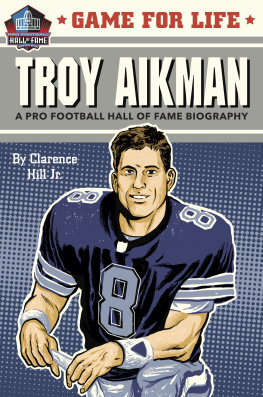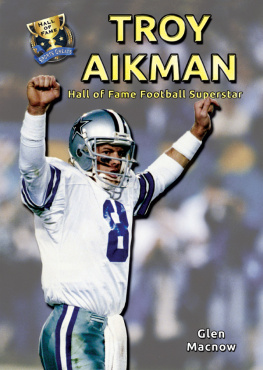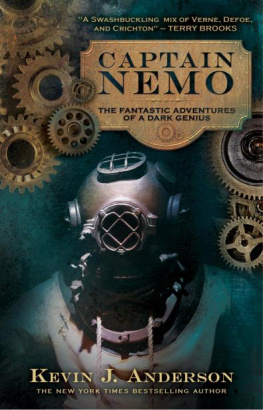Published in the United States of America and Great Britain in 2013 by
CASEMATE PUBLISHERS
908 Darby Road, Havertown, PA 19083
and
10 Hythe Bridge Street, Oxford, OX1 2EW
Copyright 2013 Kevin ORourke and Joe Peters
ISBN 978-1-61200-126-5
Digital Edition: ISBN 978-1-61200-138-8
Cataloging-in-publication data is available from the Library of Congress and
the British Library.
All rights reserved. No part of this book may be reproduced or transmitted in
any form or by any means, electronic or mechanical including photocopying,
recording or by any information storage and retrieval system, without permission
from the Publisher in writing.
10 9 8 7 6 5 4 3 2 1
Printed and bound in the United States of America.
For a complete list of Casemate titles please contact:
CASEMATE PUBLISHERS (US)
Telephone (610) 853-9131, Fax (610) 853-9146
E-mail:
CASEMATE PUBLISHERS (UK)
Telephone (01865) 241249, Fax (01865) 794449
E-mail:
FOREWORD
I had to decide whether we should risk the loss of maybe a dozen airplanes and crews to get just one man out, General John W. Vogt, Jr. explained, as he reflected on the Oyster 01 Bravo SAR. Goddamn it, the one thing that keeps our boys motivated is the certain belief that if they go down, we will do absolutely everything we can to get them out, he continued, I just said, Go do it!
This quote from General Vogt, the 7th Air Force commander in 1972, shows the U.S. Air Forces commitment to rescuing its service members who are downed in combat. Even though I was the pilot of the helicopter that rescued Oyster 01 Bravo, I wasnt aware of the Generals statement until I saw it in Taking Fire. Reading it made me cry.
Having been involved in several of the search and rescue missions (SARs) in this book, I thought I knew exactly what happened with each one. I was amazed to discover so much more about these missions by reading Taking Fire. The authors research has been comprehensive and extensive. They spent years tracking down and getting interviews from the key players and even accessed archived information about the airplanes and helicopters involved in the SARs.
I first heard from Kevin ORourke in 1983 when he was working on his undergraduate degree at Framingham State University. I got a call from this inquisitive college student asking me questions about the 1972 rescue of Capt. Lynn Aikman, known as the Valent 04 Alpha mission. I gave him the short version of my role in the SAR. Kevin also contacted two other Jolly Green crew members, copilot Rufus Hutchinson and PJ Chuck McGrath, as well as the survivor, Lynn Aikman. Since Kevin had conducted telephone interviews with all of us, we thought he had enough background for his project. But Kevin wasnt finished. Soon the four of us found ourselves on commercial airplanes to Boston, where a studio was set up to film interviews with us. Kevin told us he hoped that this project would lead to a larger product, such as a full-length documentary, movie or book. We were a bit skeptical.
But back then I didnt know about Kevin ORourkes determination and commitment. In 2012, I had been retired from the Air Force for nineteen years and living in Montana, when I got a call from Kevin telling me that he had revived this project. I was pleasantly surprised to learn that after three decades, a book was nearly finished and that other prospects were still cooking.
The importance of a book such as this and the manner in which it has been written is illustrated within the story itself. I had exchanged Christmas cards over the years with Lynn Aikman, the downed F-4E pilot, but I never had a chance to actually talk to him, even on the day we rescued him. I got that opportunity in 1982. Contained in Taking Fire is the story of when Lynn invited to his house the three Jolly Greens, Rufus Hutchinson, Chuck McGrath, and me, all stationed at the Pentagon at the time. It was ten years to the day that we had pulled Aikman out of a ravine in North Vietnam. That gathering was a chance for us to tell our stories to each other... for the first time. It was a seminal event that Ill never forget.
Now, through Taking Fire, readers will have a chance to share in this story. The authors have been able to responsibly weave the details of other missions with this SAR, giving the readers insight into the men involved in this rescue.
Chuck McGrath and Lynn Aikman maintained a close relationship over the years. That bond began with McGrath dragging the seriously injured Aikman down a steep slope through the jungle to the awaiting helicopters rescue hoist. McGrath and Aikman endured eighteen minutes under fire on the ground, only to see the rescue-hoist cable sever and the helicopter fly away. My helicopter arrived four minutes later to make the second rescue attempt. As Lynn entered the hovering aircraft, his ankle was shattered by a bullet. After another ten minutes of taking fire, we got the hell out of there. To make matters worse, our two HH-53C helicopters, each carrying a wounded crew member and receiving battle damage, encountered a MiG that made a run on us on the way home. The full account of the SAR is pretty scary reading. It may be hard to believe. Even I had forgotten about the danger our two helicopters were in until I was reacquainted with the events through reading this book.
Keep in mind that the Jolly Green crews are not alone. They are led by the A-1H Sandy pilots who pinpoint the survivors location and risk their lives trolling for ground fire, and then beat back or kill the enemy to allow the helicopters to pick up the survivor. Squadron commander Major Jim Harding, the A-1H pilot, was my idol and a legend within the A-1H community. He was the on-scene commander for many of the tough SARs. When anything endangered his Jollies, he attacked them like a pit bull. You can bet that we Jolly Green pilots wanted him on our SARs.
All of the Jolly Green crew members describe their combat experience the day of the rescue. Major Leo Thacker and his crew weathered eighteen minutes of small arms fire at their hovering helicopter. Also featured is Captain Ben Orrell, who recovered Valent 03 Alpha earlier in the day. He had a total of thirteen rescues during his tour. Cool under fire, Ben was the finest Jolly Green pilot that I encountered during my tour. Known as Gentle Ben, he had a lions heart.
This particular SAR was a gathering of highly decorated and experienced crew members. Sergeant Chuck McGrath received the Air Force Cross, second only to the Medal of Honor, for his bravery in the rescue of Captain Aikman. The Jolly Green crew members and the A-1H pilots who flew on the two Valent SARs received four Air Force Crosses and over twenty-five Silver Stars, the nations third highest medal for valor, during their combat tours.
Many SAR articles dont cover the rest of the story; however, Taking Fire does. The book describes the shoot-down of each aircraft and what happened to the crew members who got captured. Due to authors persistence and attention to detail, there is a complete picture of what transpired on the various SARs and why.
That Others May Live, is the fitting motto of Combat Air Rescue. General Vogts statement of the U.S. Air Forces resolve and determination to save just one man, while risking both aircrews and aircraft, still holds true in todays rescue community.











